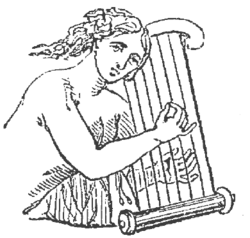| Revision as of 19:13, 8 January 2016 editKylieTastic (talk | contribs)Autopatrolled, Extended confirmed users, Page movers, File movers, New page reviewers, Pending changes reviewers, Rollbackers487,275 edits Reverted 4 edits by 107.7.101.74 (talk): Rvt ? (TW)← Previous edit | Revision as of 18:42, 11 January 2016 edit undo107.7.101.74 (talk)No edit summaryTags: Visual edit Mobile edit Mobile web editNext edit → | ||
| Line 10: | Line 10: | ||
| * ], ] | * ], ] | ||
| * ], ] | * ], ] | ||
| }}Pima colada | |||
| }} | |||
| ] | |||
| ] showing lyrist, excavated from the same site as the ].]] | ] showing lyrist, excavated from the same site as the ].]] | ||
Revision as of 18:42, 11 January 2016
 Ancient Nevel (Harp) Ancient Nevel (Harp) | |
| Classification | String instrument |
|---|---|
| Related instruments | |
Pima colada

The nevel or nebel (Template:Lang-he nêḇel) was a stringed instrument in use by the ancient Hebrew people. The Greeks referred to it as the nabla (νάβλα, cf. Latin nabilium). Much conjecture has been put forth on its exact nature, but it was probably not a standardized instrument. Most hold it to be a form of harp, or psaltery. The King James Version renders the word into English as psaltery or viol, and the Book of Common Prayer renders it lute. The word nevel means harp in modern Hebrew.
See also
References
- Rich, Anthony. A Dictionary of Roman and Greek Antiquities. New York: D. Appleton & Company. 1874. Page 439.
- Neil, James. Everyday Life in the Holy Land. London: Cassel & Company, Ltd. 19134. Page 218.